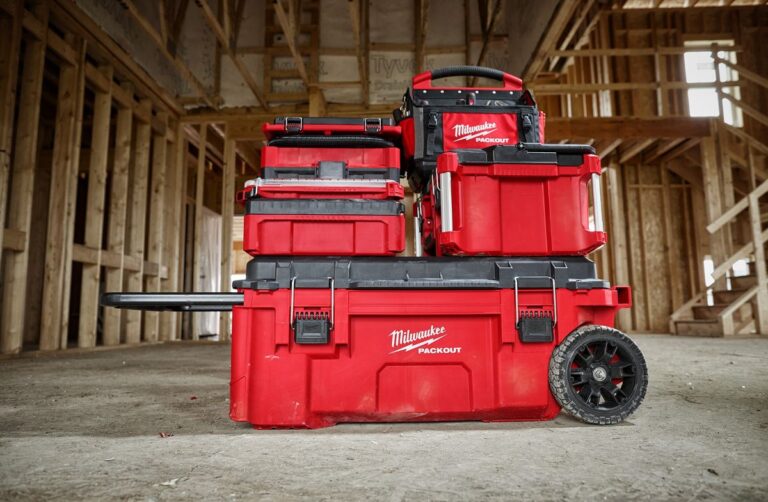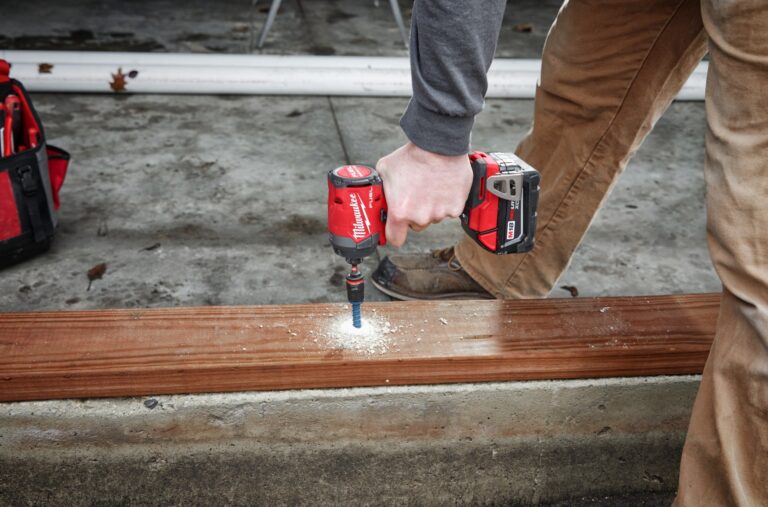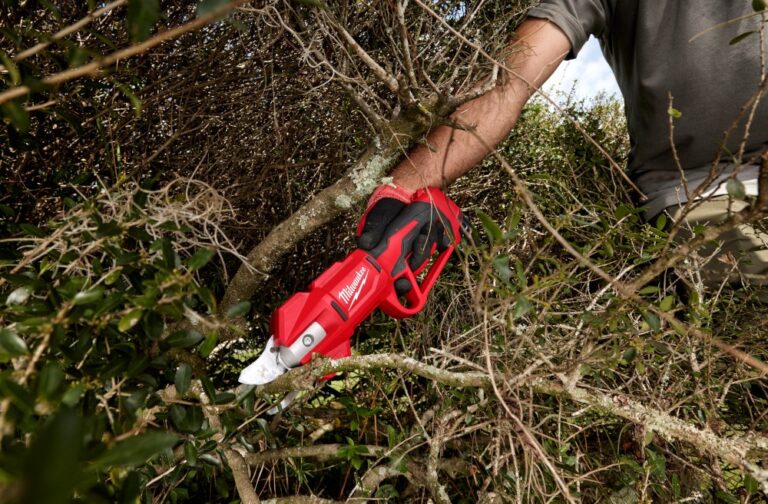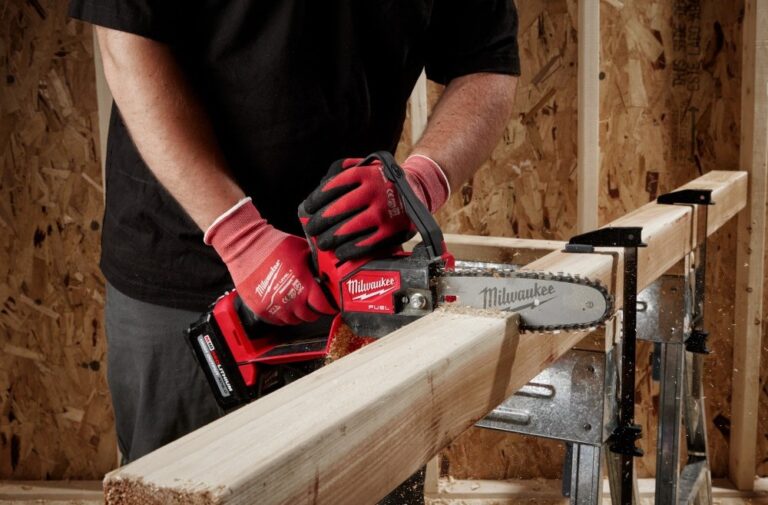Using Irrigation Installation Tools
This article is a short summary of the various tools you can expect to use for irrigation installation. Sometime around 1960, the Southwestern Bell Telephone company issued my father a set of work tools. He was a lineman and neither he nor Southwestern Bell wanted a tool to fail while he was on top of a pole. They were quality tools and he took care of them.
Fifty two years later I’m still using some of those tools. I’ve never worn one out. The ones I no longer have were “borrowed” by others. If they ever get returned (hope abides) I expect them to function perfectly.
There is no such thing as having too many good tools. A good tool will save you money in two ways. It will do the job correctly and you will not have to buy another one in the future.
A Good Tool should:
- Be well made from quality materials
- Be designed for the particular job at hand
A Tool Must Be Well Made From Quality Materials
True story: a car is broken down on the side of the road. Two guys stopped to help. The battery cable was loose but the nut had been rounded off. No wrench or socket would grab it. One guy walks into the “dollar store” and bought a pair of pliers. He came back to the car, opened the blister pack and they fell apart in his hands. The look on his face was worth the dollar but the pliers weren’t. It’s not hard to recognize a quality tool; it feels substantial, it operates smoothly and, more than likely, you will pay a premium price for it. But you’ll only do that once.
Think about the materials. For durability, weather and chemical resistance and overall strength it’s hard to beat fiberglass and polymer. Take a look at something like the long handle drain spade.
Four foot of handle, tons of leverage. You and your neighbor can pull on this handle and it won’t snap. Speaking of neighbors, if they borrow your shovel and leave it out for weeks it won’t matter. The handle is UV resistant, waterproof, chemical resistant and their dog can’t chew through it. Where is wood best? In absorbing shock. I hope you never have to use a sledge hammer, but if you do, get one with a wood handle. The fiberglass ones are OK but nothing absorbs shock like wood. Same with an axe or pick.
A Tool Must Be Designed For The Job At Hand
Have you heard the old saying “when all you have is a hammer everything looks like a nail?” Yup. You use what you have so have the right tool.
Tools: Like any industry, irrigation has its own tools, some specialized, some not. Even the general, more common tools warrant a look.
Shovel:
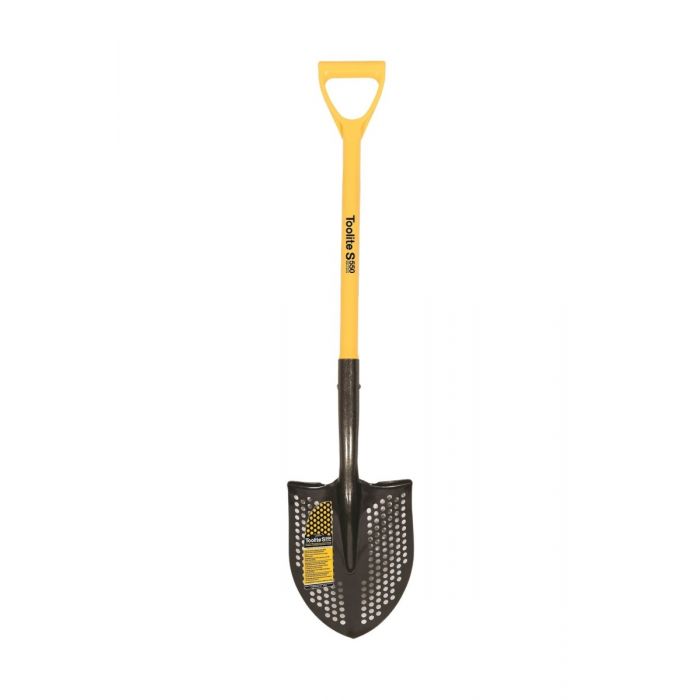
The first irrigation installation tool the we’ll talk about is the shovel. The tool you love to hate. General requirements: the blade must have a turn-over at the top, giving you somewhere to place your foot and push. The blade must be strong, sharp, and well bonded to the shaft/handle, possibly with a re-enforcing ring. Long handles are better. People forget that the blade should be sharpened periodically. Do so. Click here to shop for shovels.
Sharpshooter:

Also called a drain spade. DO NOT scrimp on this shovel. You will work it to death. Make sure the D-grip is strong enough to take a great amount of pressure. In this case I don’t like wood D-grips. The wood holds but the pins don’t. Go with a polymer D-grip. Sharpen the blade periodically. Click here to shop for spades.
Clean Out Shovel:
AKA a trenching shovel. You want the bottom of your trench clean to avoid pressure points on the pipe. Generally 4” wide is adequate for machine trenches, 6” for hand dug. Easy to use and, again, long handles are better. Click here to shop for trenching shovels.
Picks:
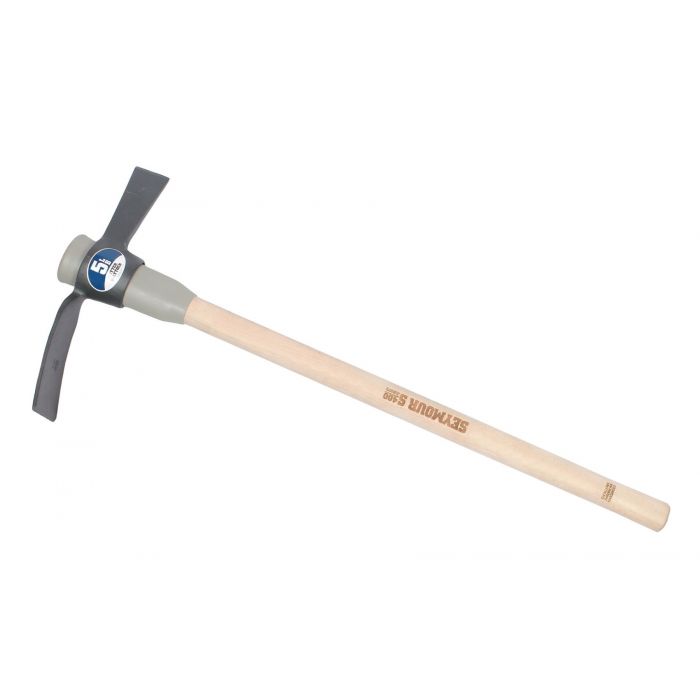
I hope you don’t need one of these. If you do, my sympathies. Used for breaking up very hard or rocky soil. Also great zombie stoppers. Get a pick/mattock. You will use the mattock to drag material out. Again, longer handles are better. Wood is best. Notice a recurring theme on handles? Impact = wood, leverage = polymer. Click here to shop for a pick.
Hacksaw:
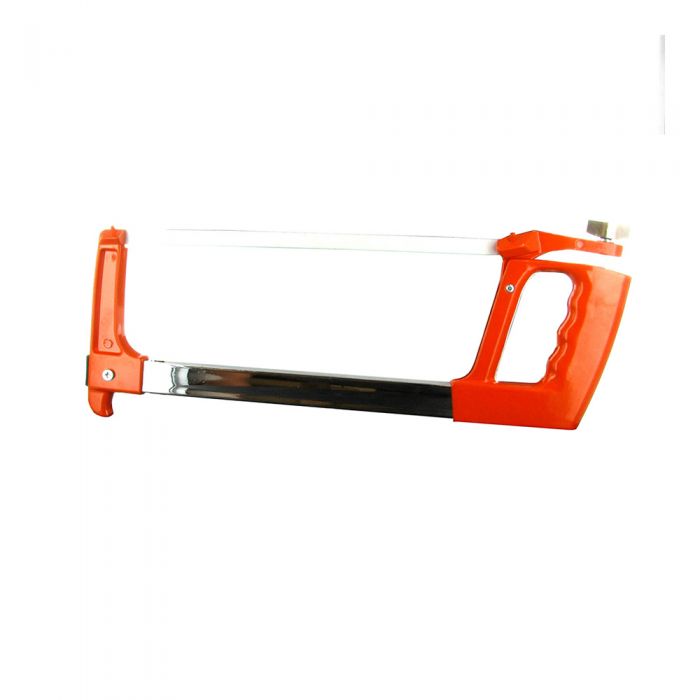
Used for cutting PVC. Many people will buy first class blades and then put them in a cheap, flexing frame. The strength/rigidity of the frame is just as important as the blade. Pay attention to the handle. Cheap ones have thin handles giving you little grip and causing discomfort. That’s known as “pain”. Get one with a thick handle. Click here to shop for a hacksaw.
PVC Cutters/Shears:
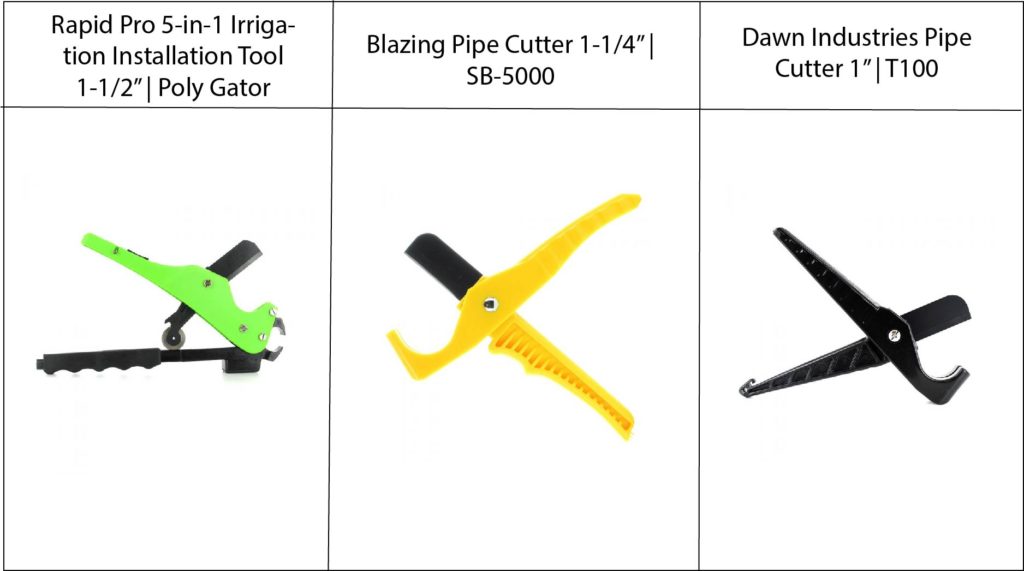
Get the ratcheting type. They are slightly slower on the cut but far less effort. Click here to shop for cutting tools.
Things You Don’t Know You Needed: Irrigation Installation Tools
For really tough spots, get a rope/cable saw. For semi-tough spots get a mini hacksaw.
Being completely honest, I hate both of these. Partially ‘cause if I need one I’m really in a mess and partially ‘cause they don’t cut as easily and as square as the full size tools. But they are just like a parachute: you sure better have it when you need it.
Most all purpose tools aren’t. Think of the slip joint pliers in your tool box. They do many things ok but nothing really right. All purpose tools are generally a waste of money. Except when they are specialized all purpose tools like the Poly-Gator™. Why does it work? It is designed for a specific need: drip irrigation installation and repair. Not your car, lawn mower, etc. It’s dedicated to the ongoing success of drip.
Sledge Hammer
No, you probably don’t need one in irrigation. However, as someone with GREAT EXPERIENCE using a sledge I have some advice for you. First, 8 and 10 pound hammers are useless. They cause more work than they fix. Get at least a 12 pound and you should get a 16 pound. More weight = more force on the hit. Old joke: “Gent watching a road-mender swinging a sledge: ‘I say, my man, do you get paid money simply for bringing a hammer down onto some rocks?’ ‘No, sir. I get paid for lifting it up. It comes down on its own.’” With a 10lb you work bringing it around and you add force bringing it down. With a 16lb you get to the top of your swing and just let the dog run.
Wire Strippers
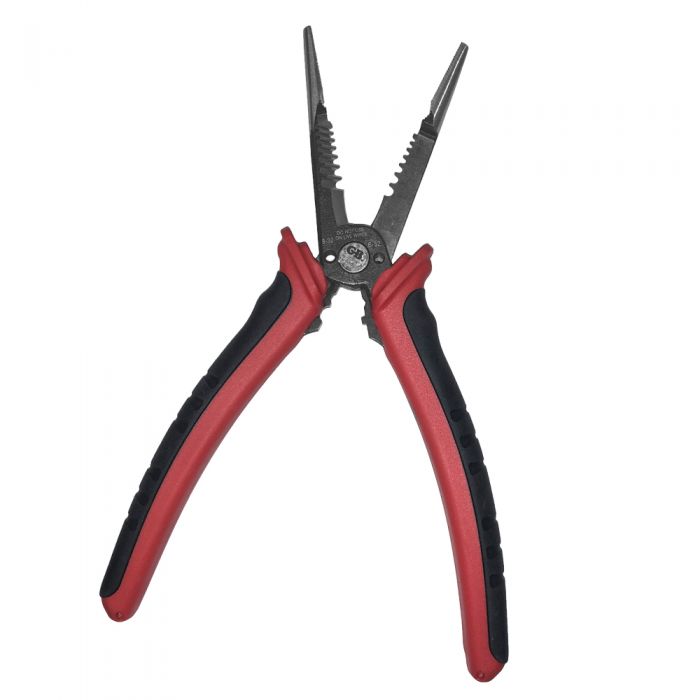
Yes, real men just use their pocket knife. However, another irrigation installation tool are wire strippers. Blood scares me. Strippers cut the wire and pull the insulation without damaging the strands. Thick grips are best. Click here to shop for wire strippers.
Obviously a lot of the advice in this blog is based on personal experience. Many people have different opinions about handle materials. Polymer handles will last longer and generally take more strain than wood handles. They are impervious to weather and won’t rot away on you. I can’t remember the last time I saw one break. I have driven literally hundreds of stakes with a sledgehammer, broken many a concrete block (no, I wasn’t in prison. It was a job). I dug ditches in construction and dig ditches now as an irrigator. I’ve never found a material that beats wood for impact absorption and never had a wood shovel outlast a polymer one.
























